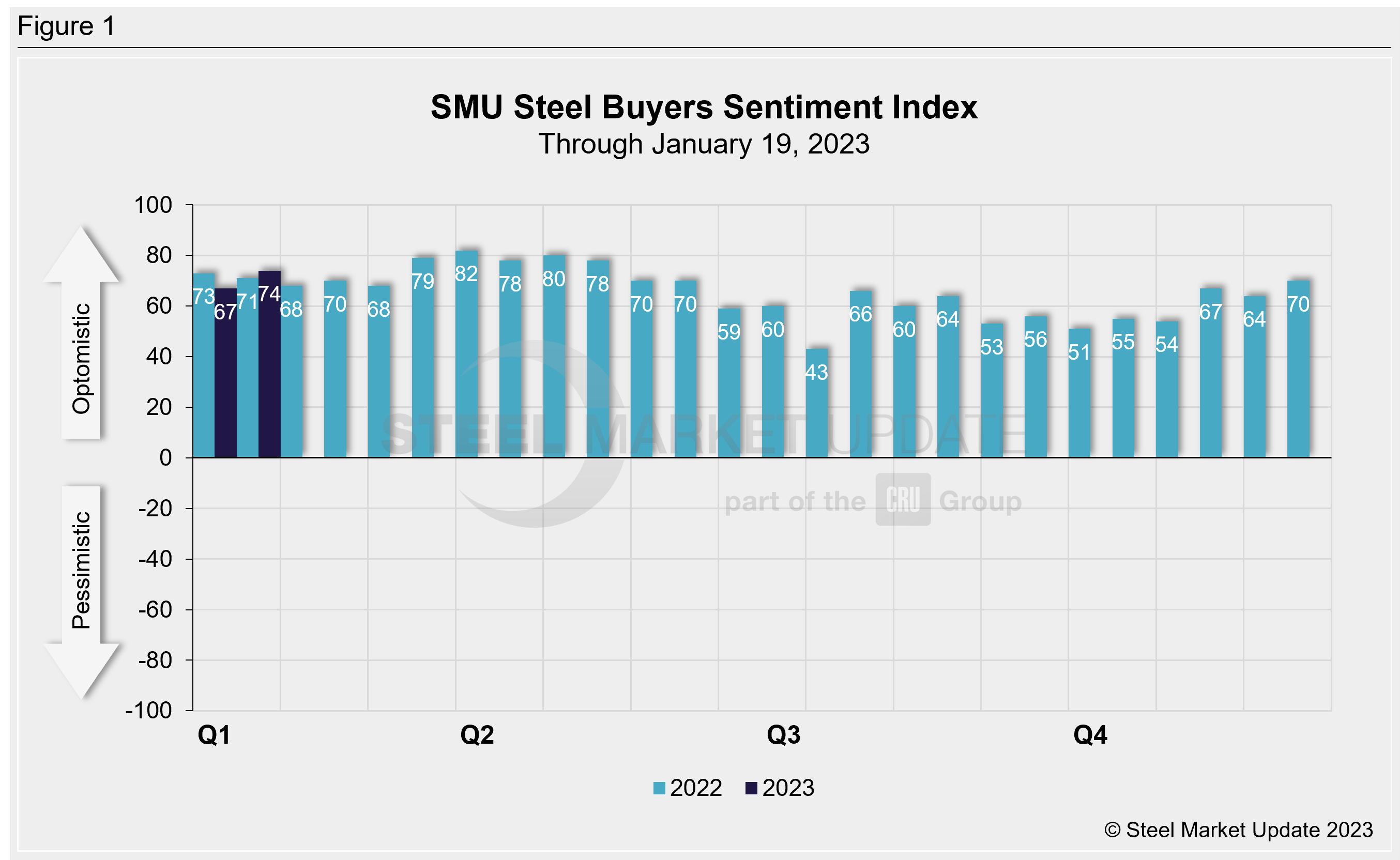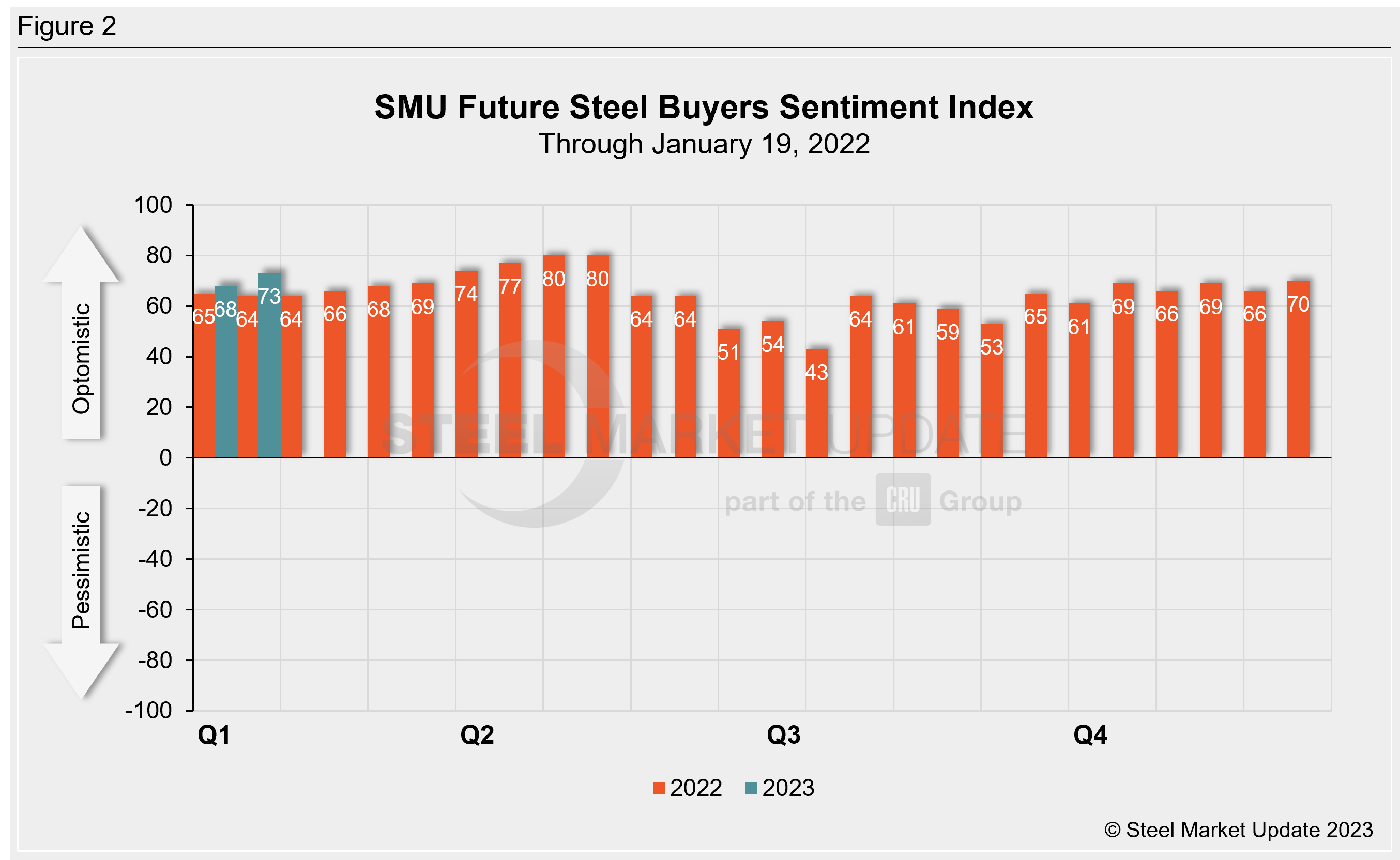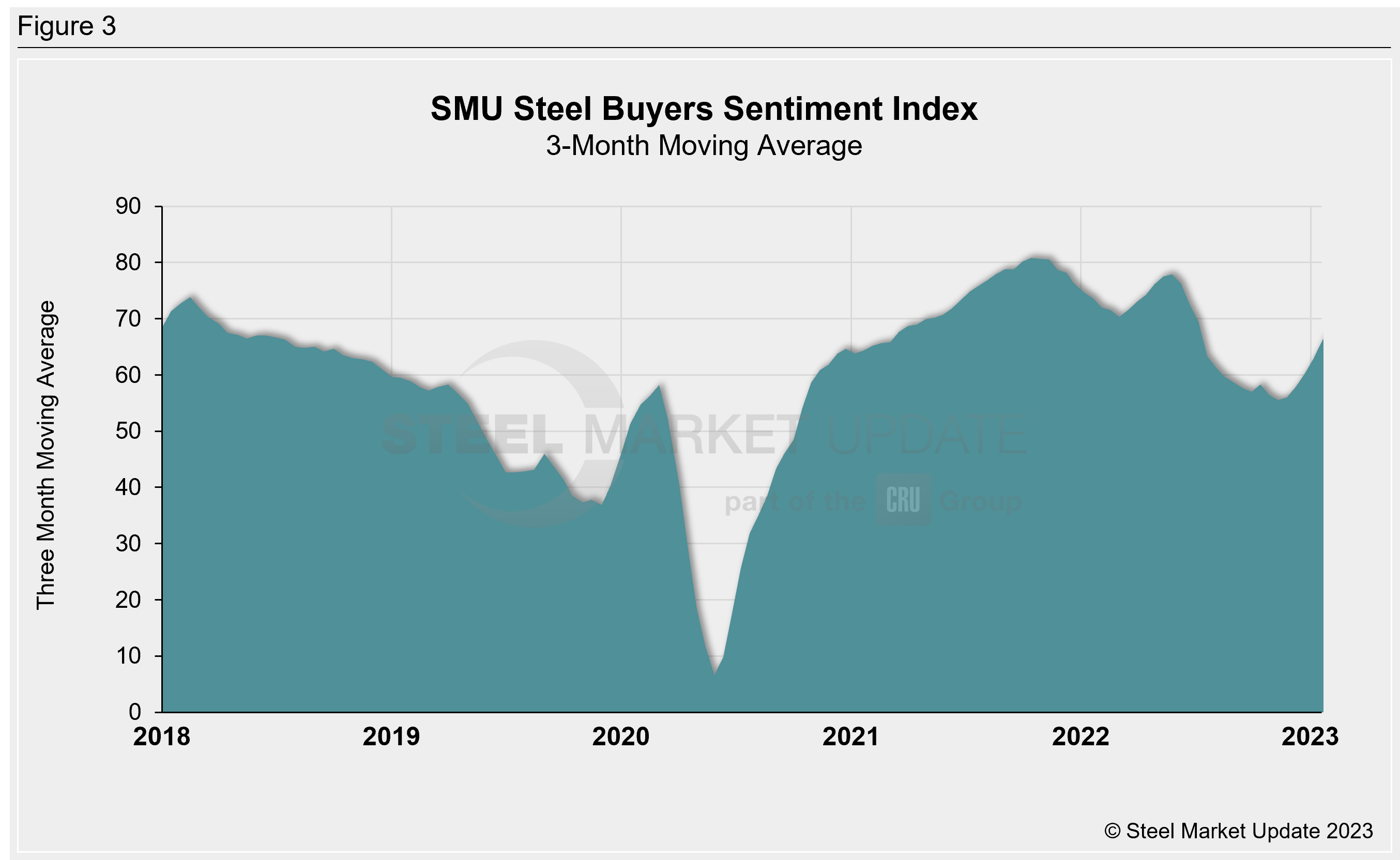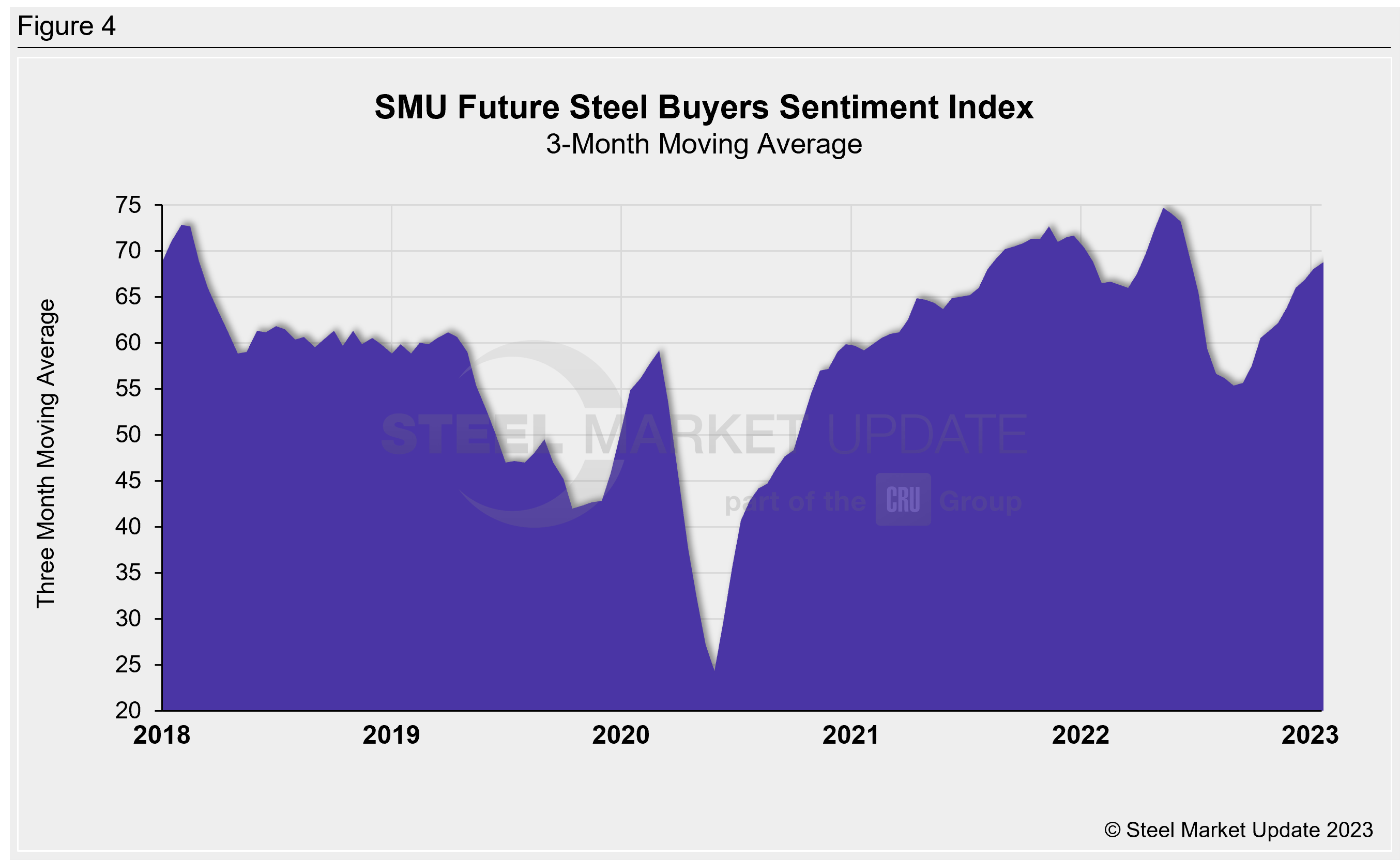Product
January 20, 2023
SMU Buyers Sentiment Indices Shoot Up
Steel Buyers appear to be more optimistic as Steel Market Update’s Current and Future Steel Buyers Sentiment Indices both ticked up five or more points this week.
SMU’s Steel Buyers Sentiment Indices measure how steel buyers feel about their company’s ability to be successful in the current market, as well as three to six months down the road. Every other week we poll steel buyers about sentiment. We have historical data going back to 2008.
SMU’s Current Buyers Sentiment Index was recorded at +74, up 7 points from two weeks ago (Figure 1). Since the end of June, this index has only hit 70 or more one other time, in late December.

SMU’s Future Buyers Sentiment Index measures buyers’ feelings about business conditions three to six months in the future. Future Sentiment rose 5 points to +73 compared with two weeks earlier (Figure 2).

Measured as a three-month moving average, the Current Sentiment 3MMA increased to +66 vs. +62.83 in the last market check. (Figure 3).

The Future Sentiment 3MMA stayed relatively flat at +68.7 vs. two weeks ago. (Figure 4).

What SMU Survey Respondents Had to Say:
“Just very competitive.”
“Demand seems to be good for now.”
“I don’t foresee pricing climbing to crazy levels, so stagnant pricing will be good for everyone.”
“Regardless of price and demand swings, the show must go on.”
“Customers are still ordering.”
“Slowing demand, import pressure.”
“Demand started better than expected.”
About the SMU Steel Buyers Sentiment Index
The SMU Steel Buyers Sentiment Index is a measurement of the current attitude of buyers and sellers of flat-rolled steel products in North America regarding how they feel about their company’s opportunity for success in today’s market. It is a proprietary product developed by Steel Market Update for the North American steel industry. Tracking steel buyers’ sentiment is helpful in predicting their future behavior.
Positive readings run from +10 to +100. A positive reading means the meter on the right-hand side of our home page will fall in the green area indicating optimistic sentiment. Negative readings run from -10 to -100. They result in the meter on our homepage trending into the red, indicating pessimistic sentiment. A reading of “0” (+/- 10) indicates a neutral sentiment (or slightly optimistic or pessimistic), which is most likely an indicator of a shift occurring in the marketplace. Sentiment is measured via SMU surveys that are conducted twice per month.
We send invitations to participate in our survey to more than 700 North American companies. Approximately 45% of respondents are service centers/distributors, 30% are manufacturers, and the remainder are steel mills, trading companies or toll processors involved in the steel business.
Click here to view an interactive graphic of the SMU Steel Buyers Sentiment Index or the SMU Future Steel Buyers Sentiment Index.
By Ethan Bernard, Ethan@SteelMarketUpdate.com






